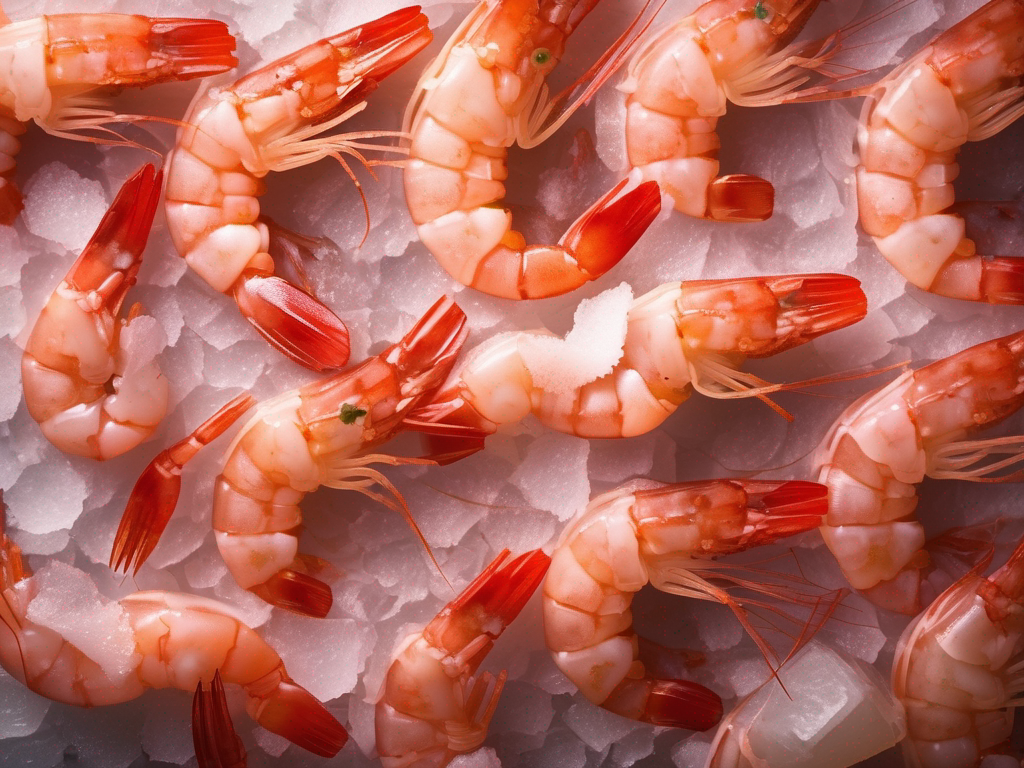
The Ultimate Guide to Properly Defrosting Frozen Shrimp
Get Your Free Food Safety Cheat Sheet
30 most common foods with instant answers. Print it and stick it on your fridge—completely free!
The Ultimate Guide to Properly Defrosting Frozen Shrimp
Frozen shrimp is a versatile and convenient ingredient to have on hand, but it's essential to defrost it properly to maintain its quality and safety. Improper defrosting can lead to the growth of harmful bacteria and compromise the taste and texture of the shrimp. In this comprehensive guide, we will discuss the best practices for defrosting frozen shrimp safely and effectively. (Frozen shrimp)
Why Proper Defrosting is Important
Properly defrosting frozen shrimp is crucial for several reasons:
- Safety: Improperly defrosted shrimp can harbor harmful bacteria such as Salmonella and E. coli, leading to foodborne illnesses.
- Quality: Correct defrosting methods help preserve the texture, flavor, and appearance of the shrimp.
- Even Cooking: Thawing shrimp evenly ensures that it cooks uniformly, preventing undercooked or overcooked portions.
Methods for Defrosting Frozen Shrimp
There are several safe methods for defrosting frozen shrimp. Choose the method that best fits your schedule and preferences:
1. Refrigerator Method
- Place the frozen shrimp in a covered bowl or container.
- Place the bowl in the refrigerator and allow the shrimp to thaw slowly.
- Thawing in the refrigerator can take anywhere from 8 to 24 hours, depending on the size of the shrimp.
2. Cold Water Method
- Place the frozen shrimp in a sealed plastic bag.
- Submerge the bag in a bowl of cold water.
- Change the water every 30 minutes to ensure it stays cold.
- Thawing using this method typically takes 1 to 2 hours.
3. Quick Thaw Method
- Place the frozen shrimp in a colander or sieve.
- Run cold water over the shrimp, gently tossing them to ensure even thawing.
- Thawing using this method usually takes 10 to 20 minutes.
4. Microwave Method
- Use the defrost setting on your microwave to thaw the shrimp.
- Be cautious not to overcook the shrimp during the defrosting process.
- Check and rotate the shrimp regularly to promote even thawing.
Safety Tips for Defrosting Shrimp
To ensure the safety and quality of your shrimp during the defrosting process, follow these essential tips:
Thawing Best Practices
- Always thaw shrimp in the refrigerator for the best results.
- If using the cold water method, do not use warm or hot water, as this can promote bacterial growth.
- Do not refreeze shrimp once it has been thawed.
Handling Precautions
- Wash your hands thoroughly before and after handling frozen shrimp.
- Use separate cutting boards and utensils for raw and cooked shrimp to prevent cross-contamination.
- Clean and sanitize any surfaces that come into contact with the shrimp.
Storage Guidelines
- If you do not plan to use all the thawed shrimp immediately, cook them before storing in the refrigerator.
- Cooked shrimp can be safely stored in the refrigerator for up to 3 days.
- Store any leftover cooked shrimp in an airtight container to maintain freshness.
Conclusion
Properly defrosting frozen shrimp is essential for maintaining its safety, quality, and taste. By following the methods and safety tips outlined in this guide, you can enjoy delicious shrimp dishes without compromising your health. Whether you opt for the refrigerator, cold water, quick thaw, or microwave method, always prioritize safe food handling practices to ensure a delightful dining experience.
Remember, the key to delicious shrimp dishes starts with proper defrosting techniques. Enjoy your culinary creations with confidence, knowing that you have defrosted your shrimp safely and effectively!
For more information on [frozen shrimp](/food/frozen shrimp) and other food safety tips, stay tuned to our blog for future updates and expert advice. (Frozen shrimp)
Authoritative Food Safety References
These agencies and university labs inform every tip and health precaution we publish.
USDA FoodKeeper – Cold Storage Guidelines
Official refrigerator, freezer, and pantry timelines maintained by the U.S. Department of Agriculture.
Visit USDA FoodKeeperFDA Produce Safety Rule & Grower Guidance
Field-to-fridge handling practices that prevent contamination of fruits, vegetables, and leafy greens.
Visit FDA Produce SafetyCDC Foodborne Illness Prevention Hub
Surveillance-backed guidance on pathogens, symptoms, and steps to reduce foodborne illness risk.
Visit CDC Food SafetyUC Davis Postharvest Technology Center
University research detailing optimal storage atmospheres for produce after harvest.
Visit UC Davis PostharvestPenn State Extension – Home Food Preservation & Safety
Peer-reviewed extension bulletins on safe canning, chilling, and reheating practices.
Visit Penn State ExtensionGet Your Free Food Safety Cheat Sheet
30 most common foods with instant answers. Print it and stick it on your fridge—completely free! Want more? Upgrade to the complete guide with 70+ foods.
Scan your food directly and get instant safety info using our AI-powered camera feature.